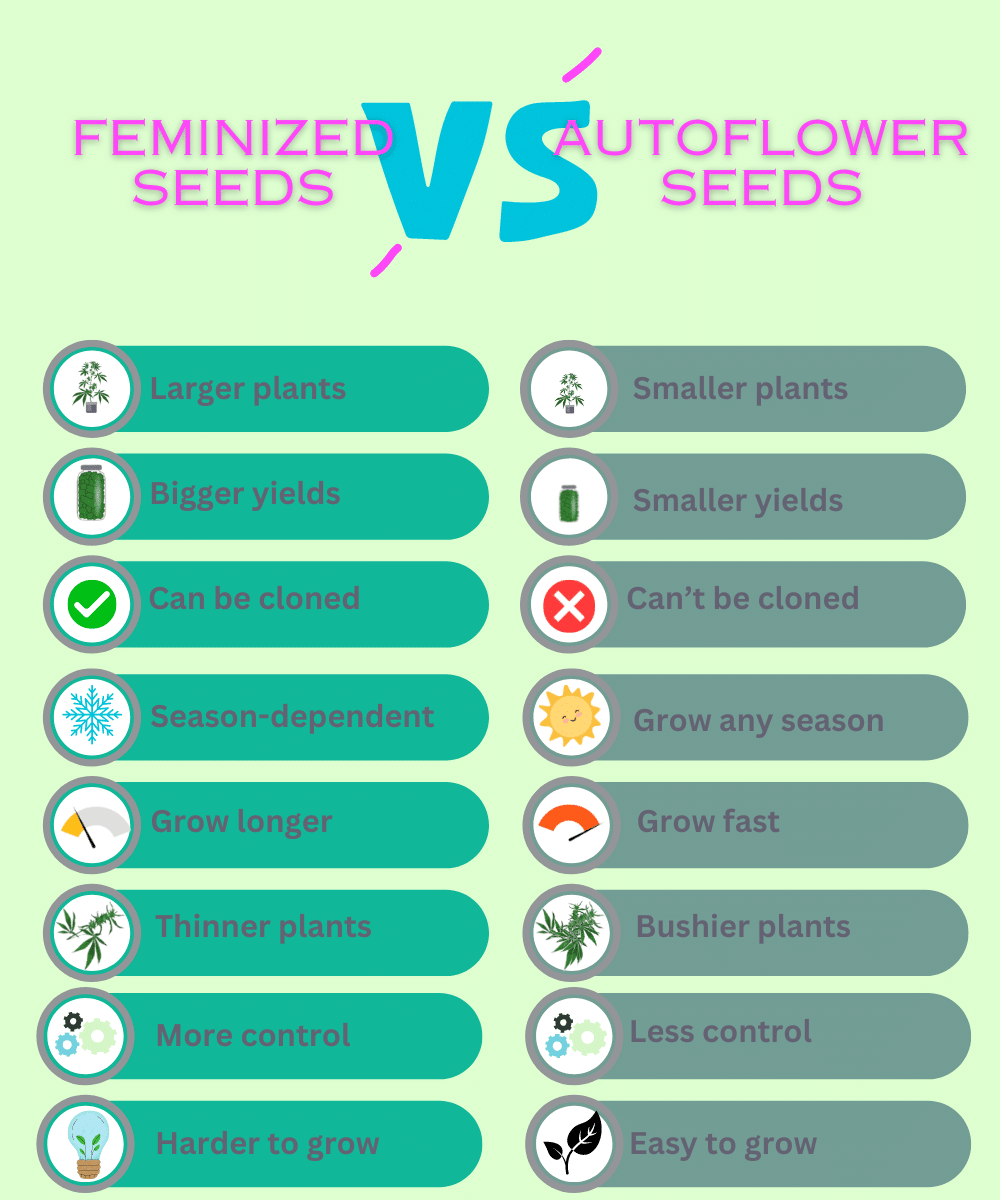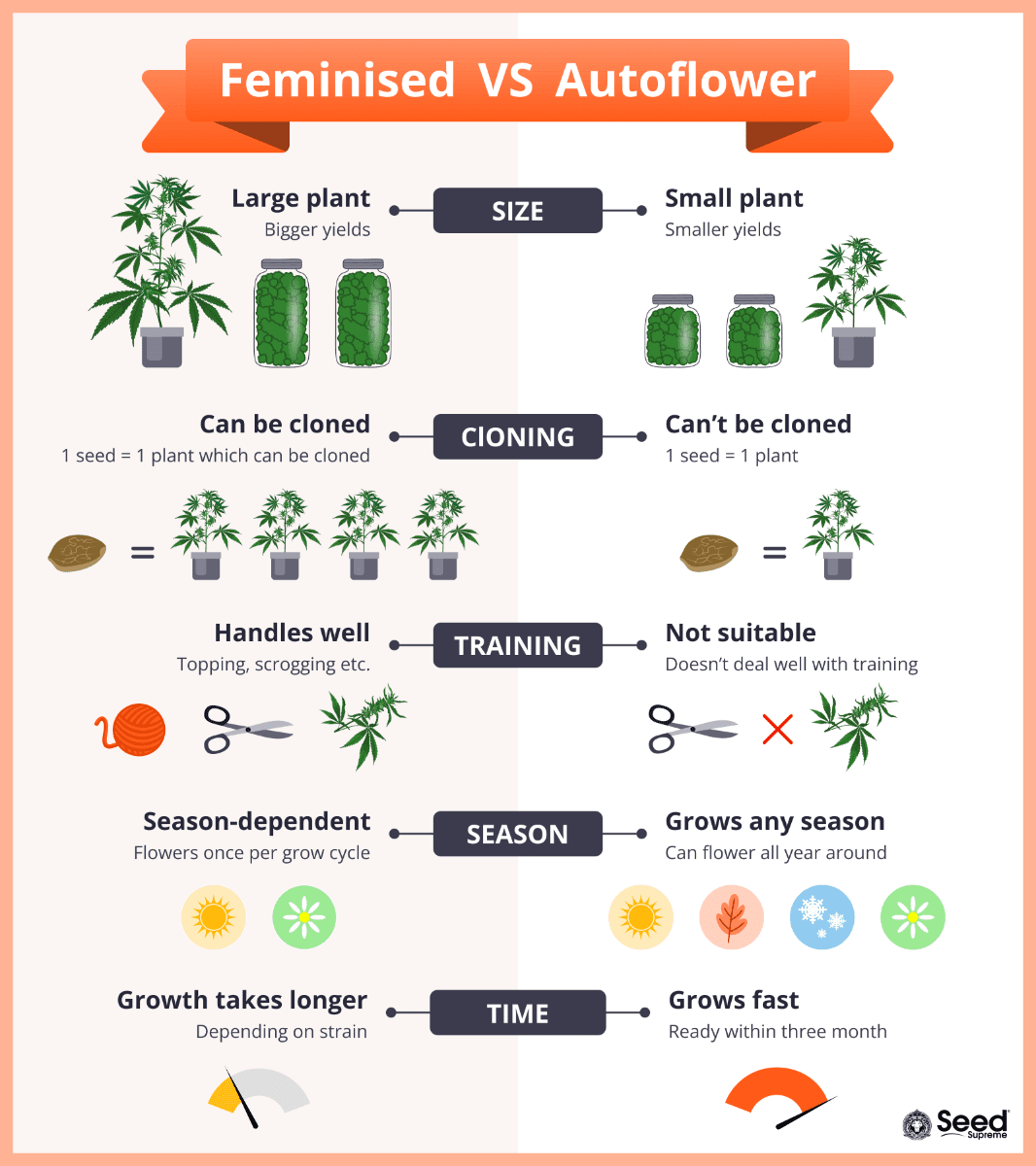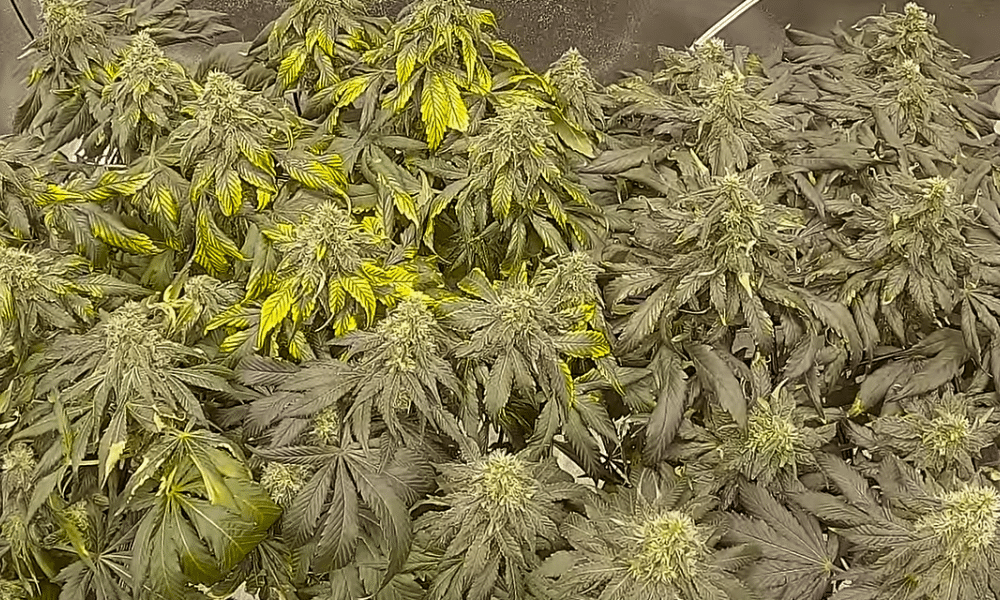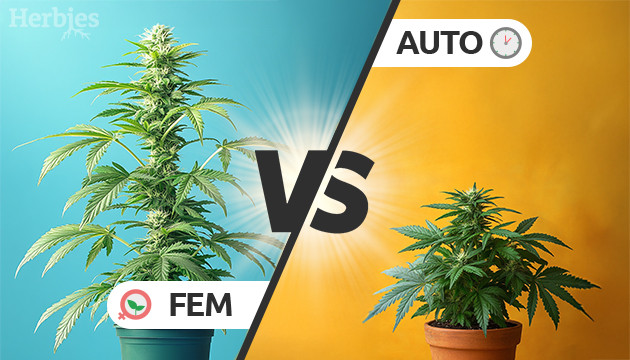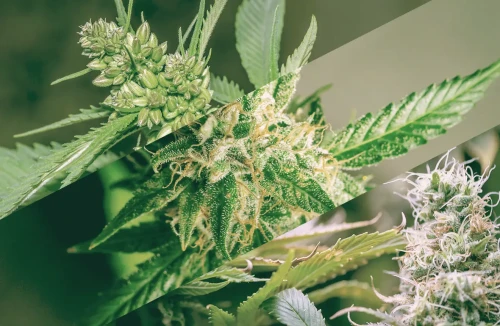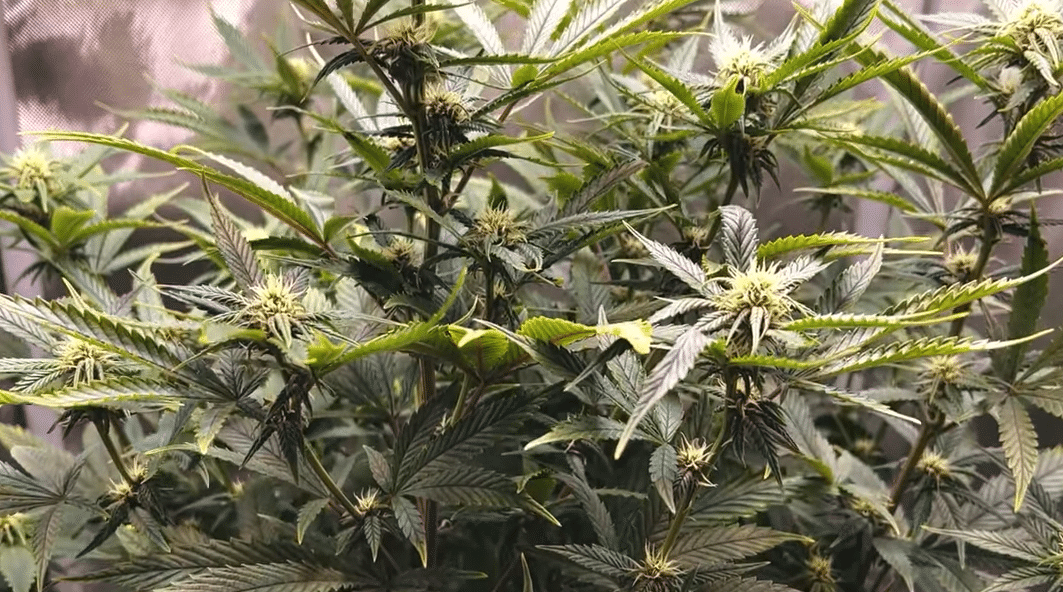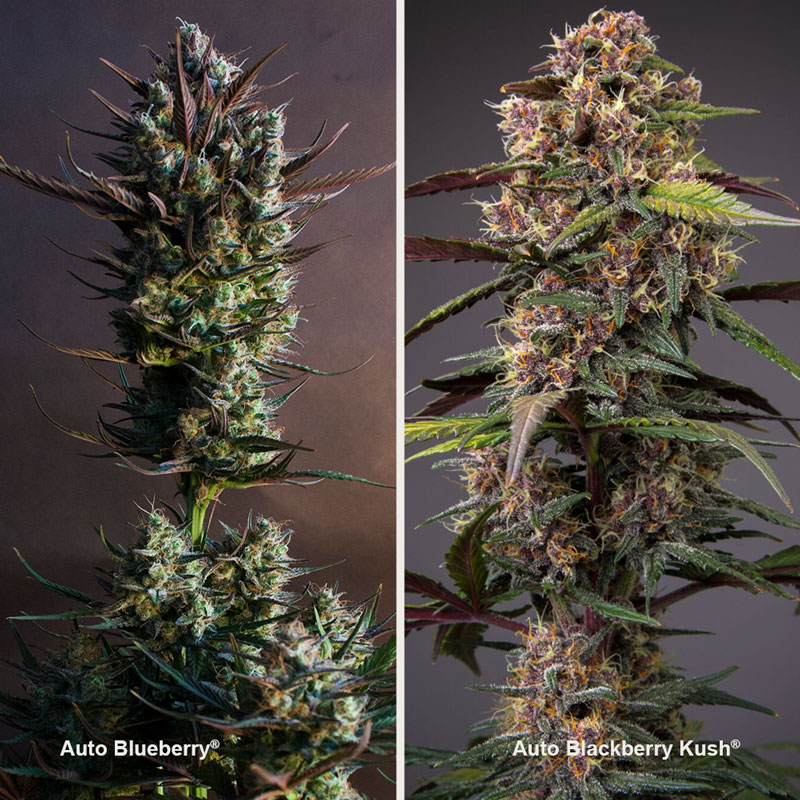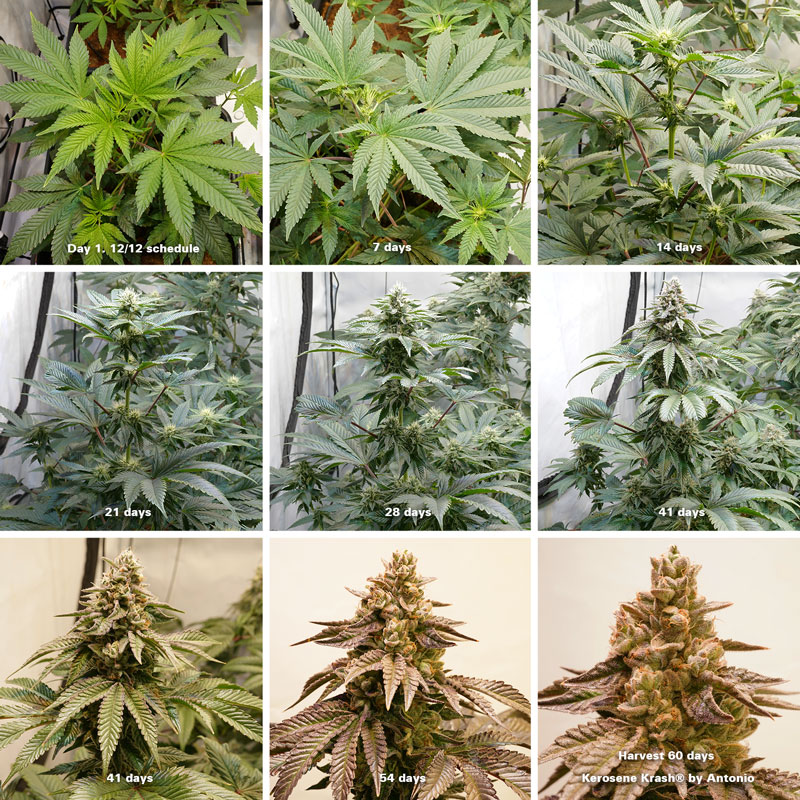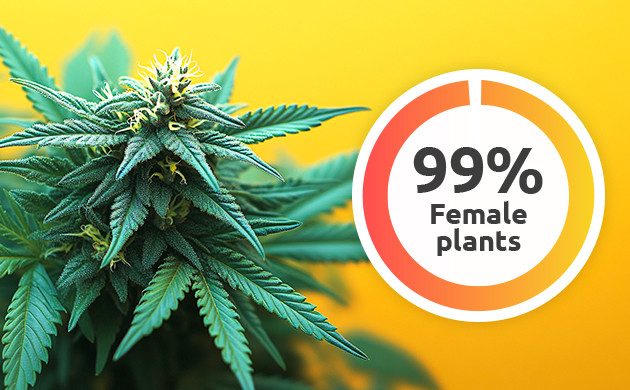What's The Difference Between Autoflower And Feminized
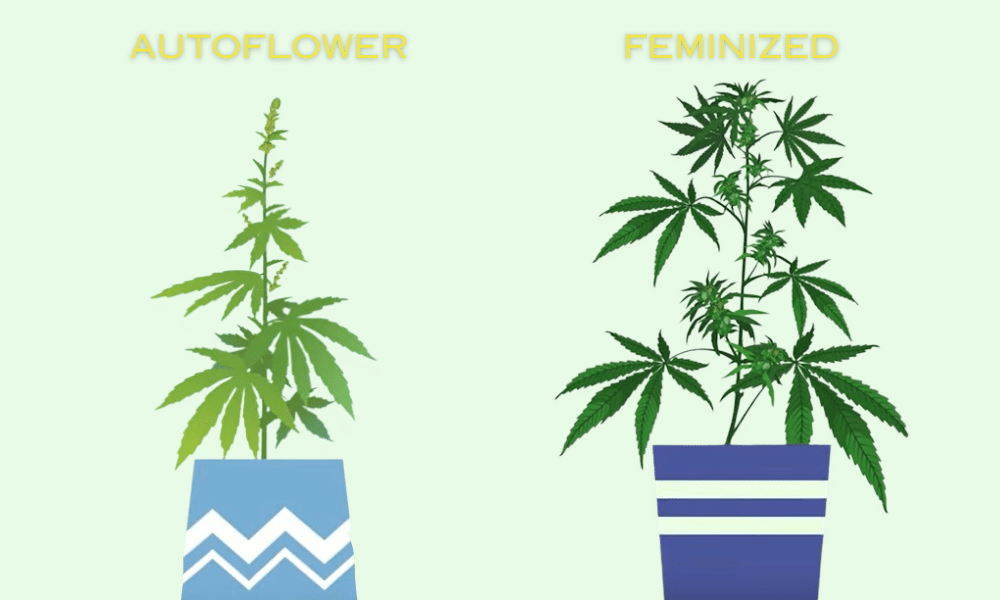
The landscape of cannabis cultivation has undergone a dramatic transformation in recent years, fueled by shifting legal frameworks and rapid advancements in breeding techniques. Two terms consistently surface in these discussions: autoflower and feminized. Understanding the critical differences between these cannabis types is paramount for both novice growers and seasoned cultivators aiming to optimize their yields and tailor their cultivation strategies.
This article delves into the nuances separating autoflower and feminized cannabis strains, exploring their genetic origins, growth patterns, flowering triggers, and suitability for different cultivation environments. The aim is to provide a comprehensive comparison, empowering readers to make informed decisions about which type best aligns with their specific needs and resources.
Autoflower Cannabis: A Race Against Time
Autoflowering cannabis strains owe their unique properties to Cannabis ruderalis, a subspecies native to the harsh climates of Central Asia and Eastern Europe. Unlike traditional cannabis varieties that rely on photoperiod (light cycle) to initiate flowering, ruderalis evolved to flower automatically based on age.
Breeders crossed ruderalis with potent indica and sativa strains to create autoflowering hybrids that retain the automatic flowering trait while offering improved potency and desirable characteristics. These hybrids inherit the ruderalis's ability to transition to the flowering stage without requiring a specific light schedule.
The Automatic Advantage: Quick Growth Cycles
The most distinguishing feature of autoflowers is their rapid life cycle. From seed to harvest, autoflowering plants typically complete their cycle in just 8 to 12 weeks. This speed makes them an attractive option for growers seeking quick turnaround times and multiple harvests per year.
This short life cycle also makes autoflowers well-suited for regions with shorter growing seasons. Outdoor growers in colder climates can often squeeze in multiple harvests before the onset of winter.
Smaller Stature, Manageable Footprint
Autoflowering plants generally exhibit a smaller stature compared to their photoperiod counterparts. They rarely exceed 3 feet in height, making them ideal for indoor grows with limited space or for discreet outdoor cultivation.
Their compact size also translates to lower nutrient requirements and reduced vulnerability to pests and diseases. This makes them a good choice for beginner growers who may not have extensive experience with cannabis cultivation.
Yield Considerations
Historically, autoflowering strains were known for producing lower yields compared to photoperiod varieties. However, advances in breeding have significantly improved the yield potential of modern autoflowers.
While they may still not rival the massive yields of some carefully cultivated photoperiod plants, many autoflowering strains now offer respectable harvests, especially when grown under optimal conditions.
Feminized Cannabis: The Photoperiod Powerhouse
Feminized cannabis seeds are specifically bred to produce female plants. This eliminates the need for growers to identify and remove male plants, which do not produce buds and can pollinate female plants, leading to seedy harvests.
The process of feminization involves stressing female plants to produce pollen sacs, which are then used to pollinate other female plants. The resulting seeds will almost exclusively produce female plants.
Photoperiod Dependence: Light is Key
Feminized cannabis strains are photoperiod-dependent, meaning they rely on changes in the light cycle to initiate flowering. Typically, a vegetative growth phase of 18 hours of light and 6 hours of darkness is maintained until the grower is ready to switch to a 12/12 light cycle to induce flowering.
This light cycle dependence gives growers greater control over the plant's growth and development. They can manipulate the length of the vegetative phase to achieve desired size and structure before triggering flowering.
Larger Plants, Higher Yields (Potentially)
Feminized photoperiod strains generally grow larger and more robust than autoflowers. With a longer vegetative phase, they have more time to develop a strong root system and build a substantial canopy.
This increased size can translate to significantly higher yields, especially when combined with proper training techniques like topping, low-stress training (LST), and the Screen of Green (ScrOG) method.
Greater Strain Diversity
The vast majority of commercially available cannabis strains are feminized photoperiod varieties. This gives growers a wide selection of genetics to choose from, each offering unique cannabinoid profiles, terpene profiles, and growth characteristics.
Whether you're seeking a high-THC sativa for daytime use or a CBD-rich indica for relaxation, you're more likely to find a suitable option among feminized photoperiod strains.
Autoflower vs. Feminized: A Side-by-Side Comparison
Choosing between autoflower and feminized cannabis depends on individual grower preferences, resources, and goals. Here's a table summarizing key differences:
Autoflower:
- Flowering Trigger: Age
- Life Cycle: 8-12 weeks
- Plant Size: Small (under 3 feet)
- Yield Potential: Lower to moderate
- Light Cycle: Not dependent
- Strain Diversity: Limited
- Experience Level: Beginner-friendly
Feminized:
- Flowering Trigger: Light cycle
- Life Cycle: Varies (longer than autoflowers)
- Plant Size: Larger
- Yield Potential: Higher
- Light Cycle: 12/12 for flowering
- Strain Diversity: Extensive
- Experience Level: Intermediate to advanced
Looking Ahead: The Future of Cannabis Cultivation
Both autoflower and feminized cannabis strains continue to evolve through ongoing breeding efforts. Breeders are constantly working to improve yield potential, potency, and disease resistance in both types.
Expect to see even more sophisticated autoflowering strains that rival the yields of some photoperiod varieties. Concurrently, advancements in feminization techniques are leading to more stable and reliable feminized seeds.
Ultimately, the "best" type of cannabis to grow depends on individual circumstances. Consider your growing environment, available time, desired yield, and personal preferences when making your decision. Researching specific strains within each category is also crucial for finding the perfect fit for your needs.
